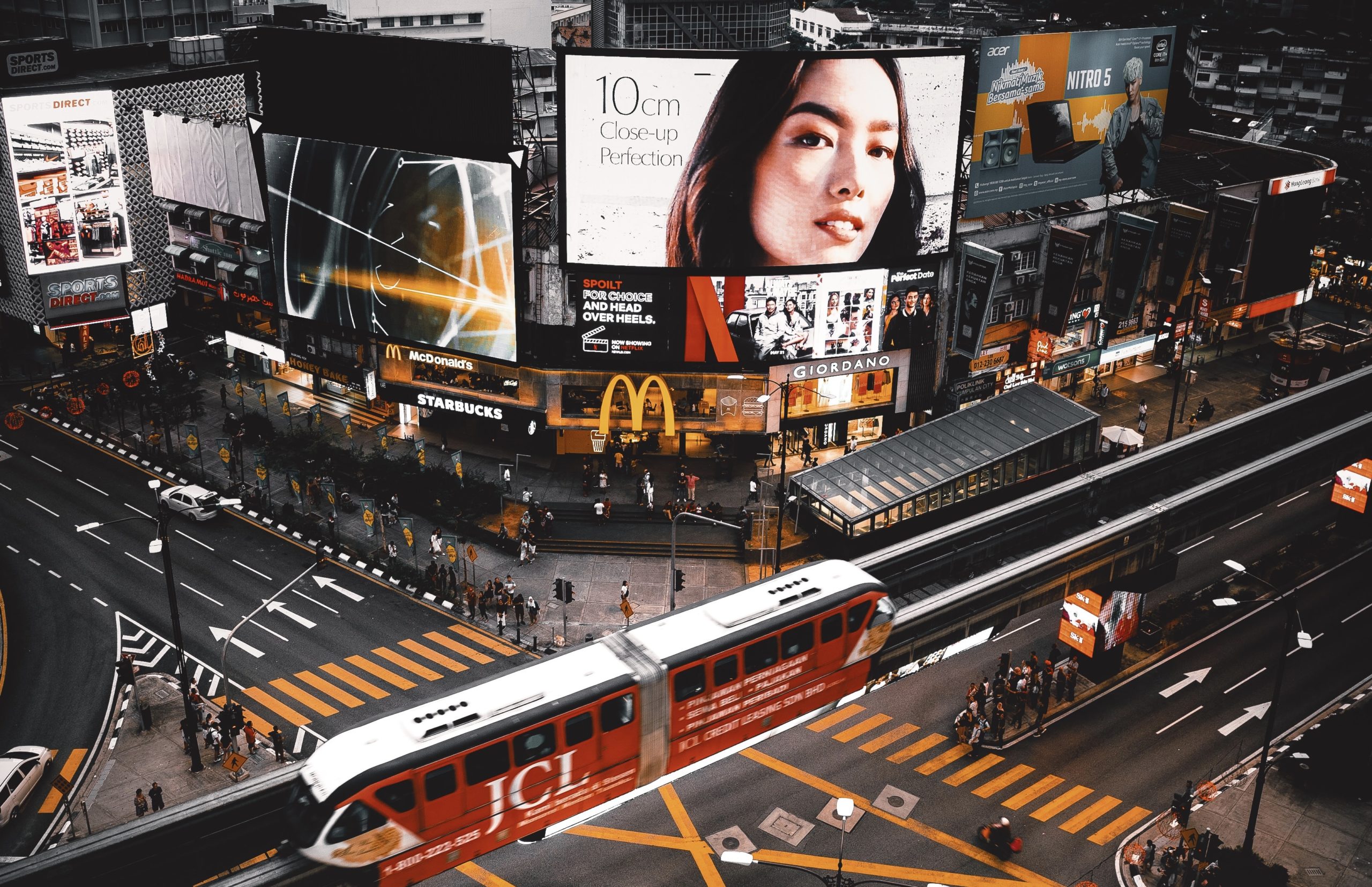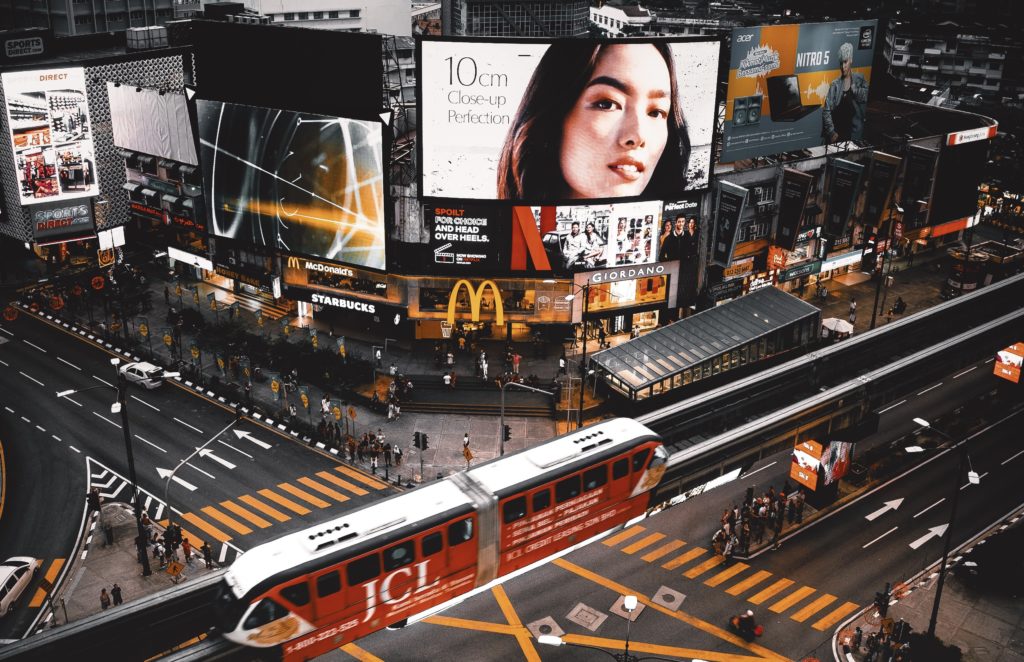What is digital OOH advertising and how does it compare to traditional OOH?

Marketing tactics are constantly evolving to keep up with and support changing demands. Consumers need personalized, relevant information, which means marketers are always on the hunt for tactics that are precise, sophisticated, and measurable. Out-of-home (OOH) advertising – think billboards and bus benches – is a perfect example of a traditional channel in the midst of a digital transformation.
Digital out-of-home (DOOH) was created to take OOH advertising to the next level. With easier implementation than traditional buying and a more automated, dynamic experience, DOOH is quickly becoming an exciting and reliable way to reach consumers. Add to that more efficient processes, rates, and the ability to adjust media buys when something unexpected occurs (for example, the COVID-19 pandemic), and it’s easy to see why DOOH has earned a place within a brand’s media mix.
Why digital OOH?
Digital OOH’s “superpower” is connecting brands with consumers across placements as they move throughout their day. DOOH uses mobile data to identify areas with a high concentration of a brand’s target audience and serves brand messages in those locations to intercept, increase awareness, and drive consumers online or in-store. Units include digital bulletin boards, digital billboards, and digital screens in buildings – including gyms, restaurants, and malls – and on the street located throughout transit and commuter stations.
How does digital OOH compare to traditional OOH placements?
- Planning: DOOH is quick and easy to implement as there are platforms that enable automated buying, avoiding the need to plan and negotiate with inventory suppliers. This allows for shorter lead times and more flexibility on campaign flighting and budgets.
- Pricing: As DOOH focuses on the user rather than the placement or location, it offers the opportunity to make a broad impact across a geographical location efficiently rather than focusing investment on select placements or working with multiple inventory suppliers and their minimums.
- Targeting: Layering on behavioral targeting by using mobile device data means brands can focus on the intended audience and reduce waste. Mobile data is able to track where audiences are going and when, making ads more relevant to those who see them.
- Messaging: Automation allows for easy creative swaps and adaptations. For example, an advertiser can easily change out creative based on the current inventory, weather, or events.
- Measurement: Using automated platforms allows reporting on impression-level data by placement within each geography. Using mobile device data, exposure can be attributed to users, which can then be used to measure lift, or as an audience pool for display retargeting.
Putting it into action during COVID-19
DOOH’s benefits have certainly been on display during the COVID-19 pandemic. When stay-at-home orders were put into place, there was an immediate reduction in travel, which in turn required advertisers to adjust their marketing plans. Unlike traditional OOH, brands with DOOH campaigns were able to:
- Easily turn off media without paying for space that wasn’t being used while turning on media that was either focused on or relevant to COVID-19
- Quickly change messaging. If ads were promoting in-store visits or seemed insensitive to the current climate, creative could be pivoted to feature a COVID-friendly message (for example: thanking healthcare providers)
- Limit delivery to specific audiences the new message was relevant for, or to placements in venues that were still open (i.e., grocery stores, convenience stores)
DOOH platforms have quickly adjusted as a result of COVID-19 to ensure media is delivering to the correct audiences. Vistar DSP/SSP/DMP introduced a targeting segment that can be layered on campaigns to only run on placements where traffic is at least 40% of the level it was pre-COVID, which ensures media will provide effective reach. The data is refreshed frequently, so once stay at home orders are lifted, the placements will open up. Vistar also added prebuilt target segments including first responders, essential workers, and road trip vacationers, allowing for precise targeting and specific messaging.
Building your OOH plan
It’s important to note that digital OOH is not meant to replace traditional OOH – sometimes traditional will continue to provide the best results. Not all OOH placements have been digitized and many static placements will still need to be purchased with the supplier. When focusing on a specific location or placement – for example, an event, or premium units like wraps on buses, trains, and trucks, or takeovers on nearby buildings and street furniture – digital won’t be able to provide as much impact or guaranteed placement. At least not yet.
As with all media decisions, the decision to run DOOH campaigns will come down to a brand’s objective, audience, and desired outcome. But whether it’s paired with a traditional plan or running on its own, DOOH is a great option to increase efficiency and reach the intended user, no matter the format.
Image source: Unsplash



